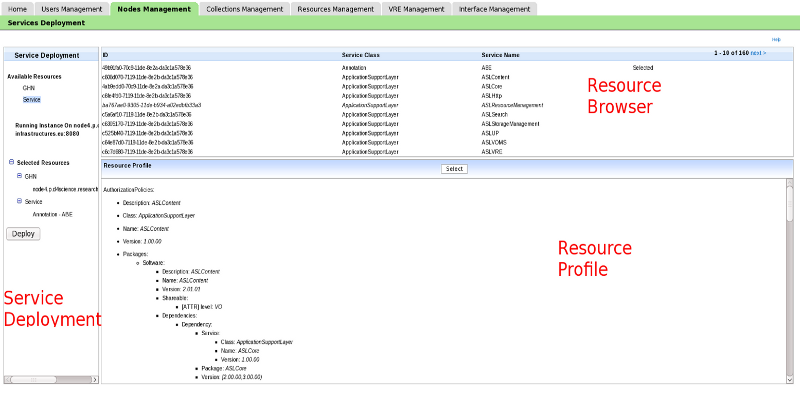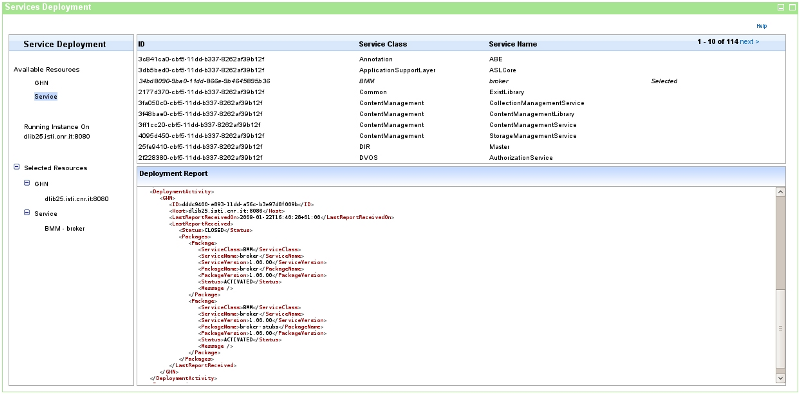Difference between revisions of "VO Services Deployment and Configuration"
Manuele.simi (Talk | contribs) (→Index Management) |
Manuele.simi (Talk | contribs) (→Content Management) |
||
| Line 46: | Line 46: | ||
* Archive Import | * Archive Import | ||
| − | and installed on a clean gHN with a storage capacity of > 50 GB. | + | and installed on a clean gHN with a storage capacity of > 50 GB (this value mainly depends on the VO expected content). |
Revision as of 18:43, 6 October 2009
Contents
Dynamic Deployment in gCube
Dynamic Deployment is a key feature of the gCube system. With this term we refer the final step of a process that starts with the description of the components provided by developers and ends with the possibility to remotely deploy any service of the gCube system.
In this part of the section the User Interface allowing the VO Manager to access to the dynamic deployment features is presented.
The interface is divided in three main panels:
- on the left area (named Service Deployment panel), the Available Resource menu allows to select the to-be-deployed Services and the target gHNs (i.e. where they will be deployed). The available gHNs are the ones belonging the VO, while the available Services are the ones registered within the VO;
- when gHN or Service is selected, the list of available resources is displayed in the upper right area named Resource Browser panel,
- finally, when a resource is selected, its profile is displayed in the lower right area named Resource Profile panel.
The selection/deselection of a gHN and/or Service can be done using the related button on the header of Profile Visualizer panel. When a gHN or a Service is selected, it is inserted into the "Selected Resource" tree in the lower part of the left side panel. This tree can be browsed and this allows the user to have a sort of basket to check the selected resources in each moment. Moreover, deselections can be done on its content any time before to request the deployment.
Once a gHN is selected, an additional entry is presented in the Service Deployment named Running Instances On <Name of Selected GHN>. By clicking on it, the Resource Browser panel lists the already available Running Instances hosted on that gHN. This allows the VO Manager to evaluate a gHN and understand if this is the correct target node.
At least one gHN and one Service have to be selected. Afterwards, a Deploy button appears on the left panel. By clicking on it, the deployment starts (after a confirmation request).
During the deployment, the state of the deployment activity is presented in the Resource Profile panel. The state is refreshed until the process is completed.
In the following, we will present how to deploy the VO level services.
Index Management
The following services have to be selected:
- Index Lookup
- Index Management
- Index Updater
These services are both memory and storage demanding, therefore the target gHN must match these characteristics (their values mainly depend on the VO expected content).
Metadata Management
Content Management
The following services must be selected for dynamic deployment:
- Content Management
- Collection Management
- Storage Management
- Archive Import
and installed on a clean gHN with a storage capacity of > 50 GB (this value mainly depends on the VO expected content).

